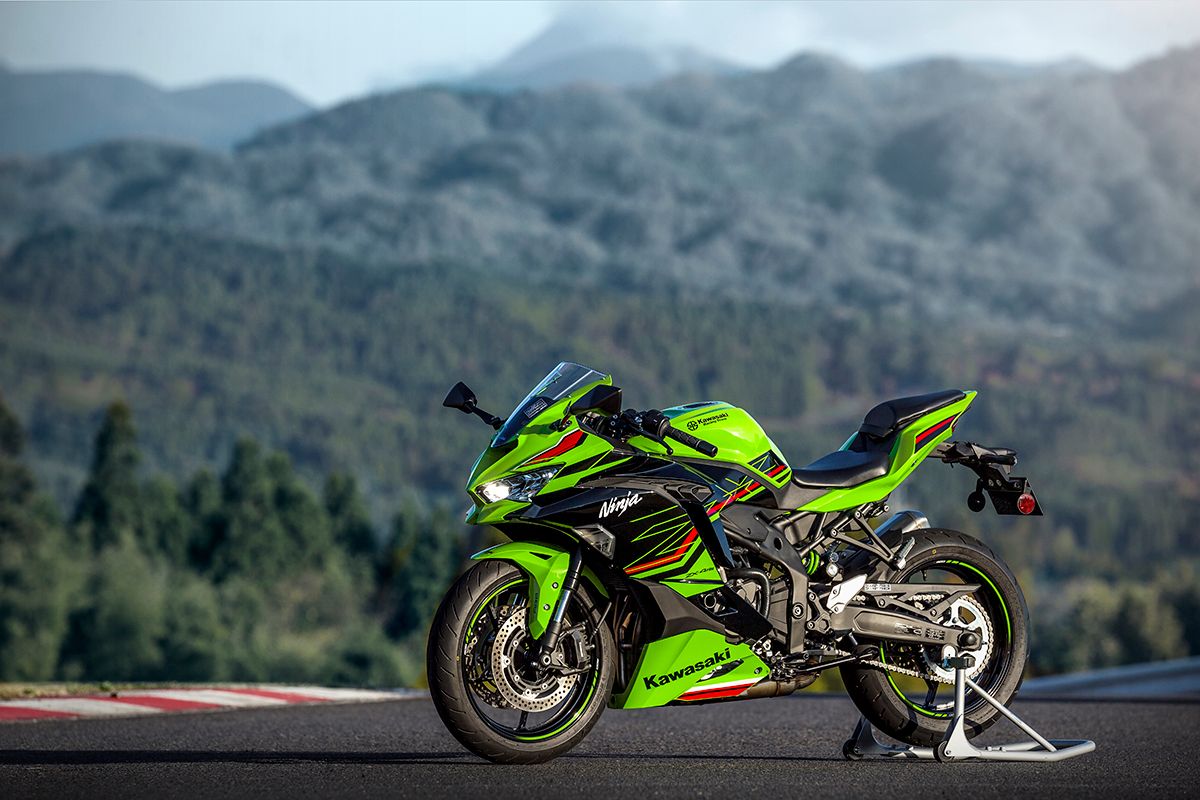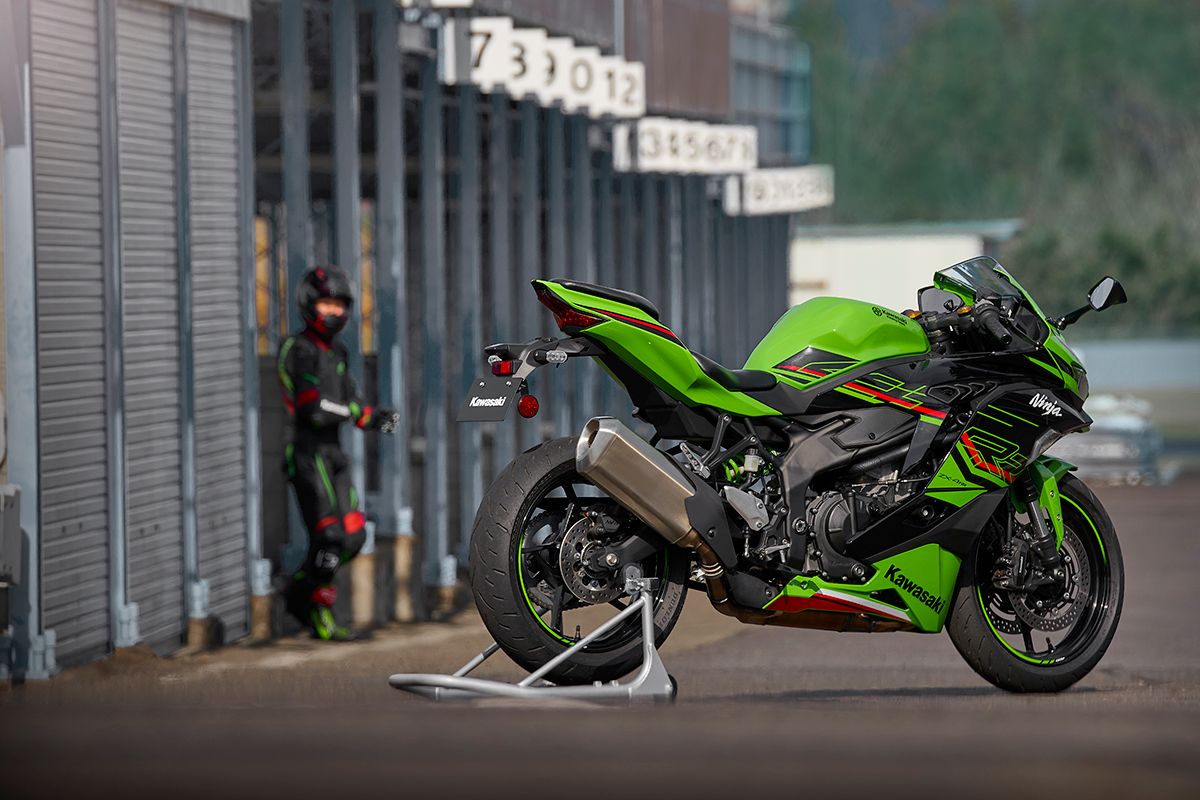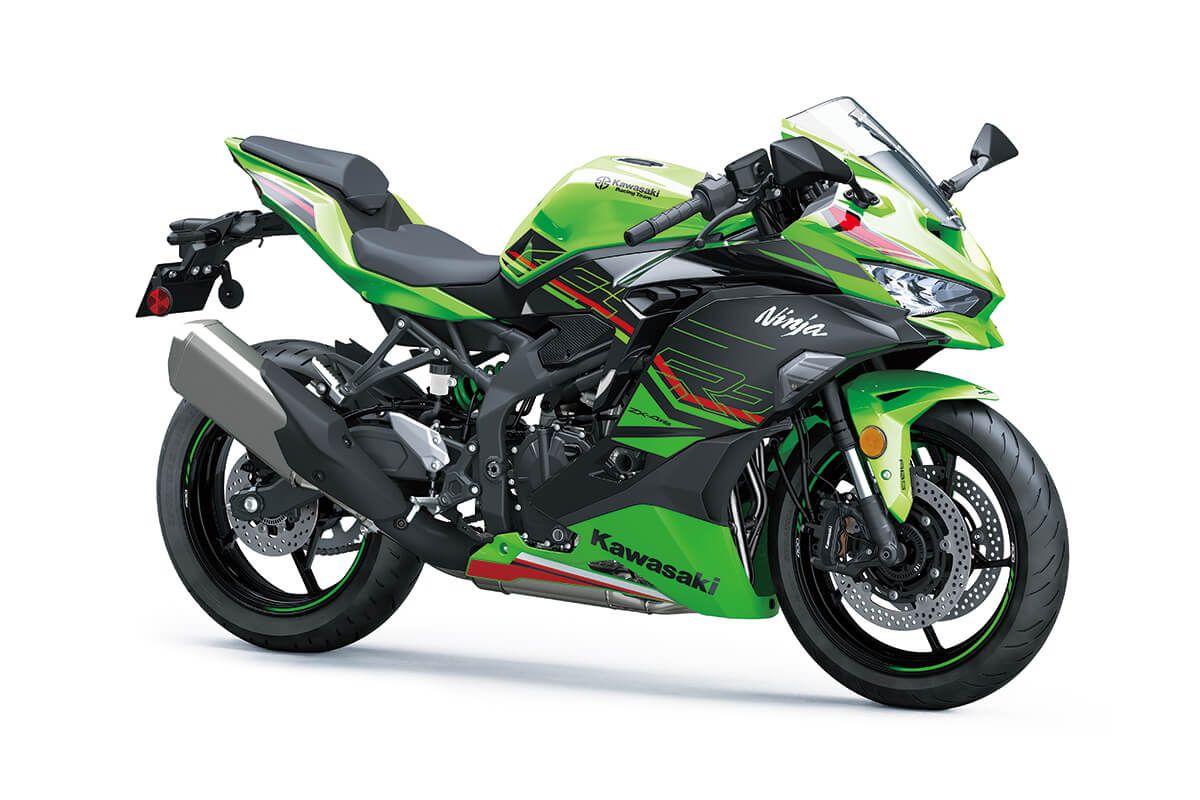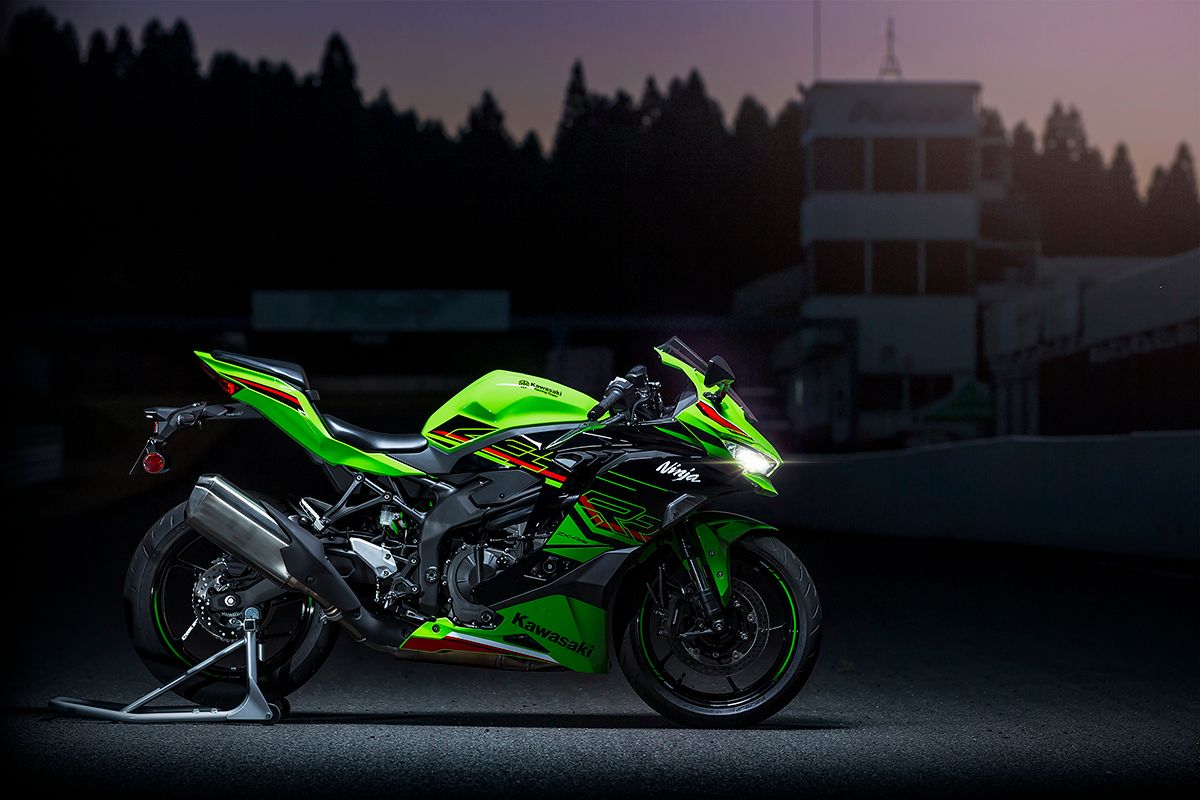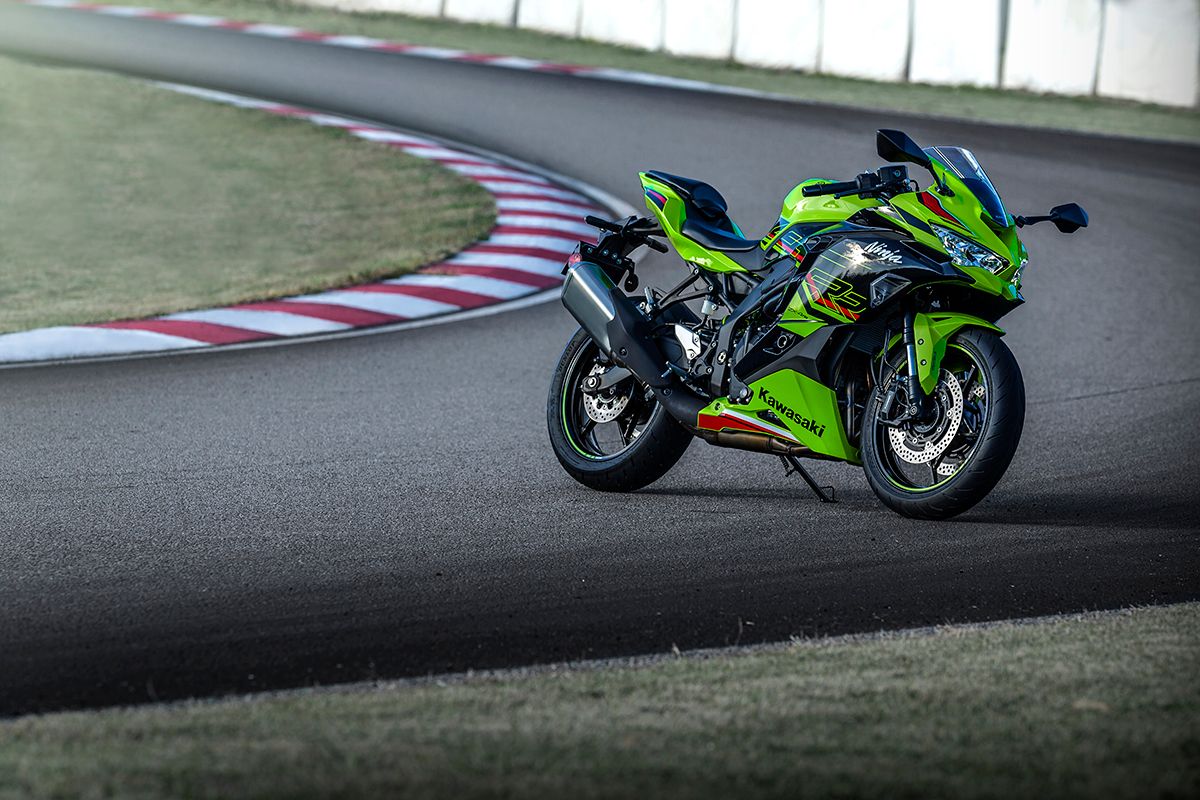Think of any motorcycle under 500cc and the chances are you are looking at a single cylinder engine or, at best, a twin-cylinder. When talking about inline four-cylinder engines, you’re looking at least at a 600cc, and more likely, 1000cc.
But there was a glorious period in the 1980s and early 1990s when the Japanese motorcycle manufacturers were building 400cc inline four-cylinder engines to comply with Japan’s legislation on vehicle tax for any engine 400cc or under. Very few were ever sold officially outside of Japan, any that did appear being ‘gray’ imports, but as incredible pieces of precision engineering with stratospheric rev limits, they were hugely desirable. Now Kawasaki is resurrecting the class, and this time, they are not just for the Japanese market.
10 History Behind The Small Inline-Four Engine
In the 1980s, the sports bike phenomenon was taking a firm hold of the motorcycle market, spearheaded by the Japanese manufacturers who were all-powerful at that point in time, having been helped in the 1970s by the British motorcycle industry imploding and the likes of Harley-Davidson embarking on the disastrous AMF years.
Because of Japanese vehicle tax legislation, a motorcycle under 400cc was financially viable for the home market, but the manufacturers didn’t want to simply churn out boring commuter bikes, but wanted to flex their engineering muscles so decided to miniaturize their 1000+cc sport bike engines. The resulting clutch of 400cc, inline four cylinder sport bikes were some of the maddest ever created, with 14,000+rpm ceilings and 60+ horsepower.
9 History Of Their Chassis
At the time, the All Japan TT-F3 race series was the hottest ticket and every manufacturer wanted a slice of the action, hence the slew of 400cc models from all the manufacturers. In order to win, a screaming four-cylinder engine wasn’t enough and some of the chassis technology wouldn’t have been out of place on full-blown 500cc Grand Prix bikes at the time.
Aluminum beam frames were starting to appear which were not only super light but also supremely stiff, enabling the suspension to do its job properly. The handling of these bikes was widely and highly praised as being exceptionally stable, precise and nimble, while the braking performance was similarly powerful.
8 The Kawasaki Ninja ZX-4RR Is Right Up To Date
Despite inline four-cylinder engines being in danger of becoming extinct due to difficulties making them compliant with Euro5 emissions regulations - Suzuki’s GSX-R1000 is one such bike that is being discontinued in Europe and Japan - Kawasaki is playing for keeps in the small-displacement four-cylinder game, with a 250cc-four already on sale in Asian markets.
The Kawasaki Ninja ZX-4RR has a 399cc engine, with bore and stroke measurements virtually identical to the 1990 ZXR-400R but benefiting from a further 30 years of technological advancement, including a vast improvement in electronic sophistication. The red line is a staggering 16,000rpm, peak torque of 26.5 foot pounds at 11,000rpm and a claimed 80 horsepower at an undisclosed rev speed.
7 Ninja ZX-4RR Engine Details
The Kawasaki Ninja ZX-4RR uses a ram air effect to increase power output. Two lengths of intake are utilized - 40mm and 60mm. There are four valves per cylinder, the intake valves being 22.1mm and the exhaust valves being 19mm. The throttle bodies use Kawasaki’s latest Electronic Throttle Valves which, in conjunction with the high-spec ECU, precisely controls fuel to the injectors and air flow.
Flow of the air-fuel mixture has been optimized by using super fine sand in the casting process to ensure a smooth intake wall and the intake area near the valves has been given as straight a path as possible. All this helps the engine achieve Euro5 emissions regulations as well as optimizing the performance of the engine.
6 Engine Internals And The Exhaust System
Pistons are ultra-lightweight cast aluminum, coated in molybdenum for low friction and durability. The compression ratio is 12.6:1, which means that regular gasoline can be used. The cylinders themselves are die-cast aluminum, the connecting rods have been given a carburizing treatment. For durability and the super light crankshaft flywheel reduces mass and allows the engine to build and lose revs super quickly, as you would expect from an engine with low internal inertia as all the components are much smaller and lighter than normal. The exhaust comprises four header pipes that feed into a trio of catalytic converters, one of the reasons the engine is Euro5 compliant.
5 Ninja ZX-4RR Electronics
Take the Ninja ZX-4RR back in time to the 1980s, and race engineers would be staggered by the level of electronic sophistication, not only for the engine management (imagine what power they could have safely got out of the 500cc two-strokes with this computing power) but also the rider aids, which are on a par with Kawasaki’s larger sports bikes, the ZX-6R and ZX-10R.
There are four riding modes, Sport, Road, Rain and Rider (customizable), each of the first three with pre-set parameters for traction control and power delivery. ‘Rider’ allows three levels of traction control intervention - as well as Off - and two power modes. A bi-directional quick shifter is fitted as standard.
4 Ninja ZX-4R TFT Dash
If evidence were needed of the technology trickle-down effect, then it is right there in the full-color TFT dash fitted to the Ninja ZX-4RR: it wasn’t that long ago that this was technology reserved for only the top-of-the-range models in any manufacturer’s catalog. There are multiple screen modes, including a track mode, that features a lap-timer, prominent rev counter and gear position indicator. You can choose between dark or light themes and there is automatic adjustment of the brightness level based on ambient light. By using Kawasaki’s Rideology App, your smartphone can be linked to the bike.
3 Ninja ZX-4RR Chassis Performance
The only department where technology seems to have regressed from the bikes of the 1990s. As we mentioned above, high-tech aluminum beam frames were used then but, today, in the name of cost-effectiveness, a steel trellis frame is used, along with a steel banana-shaped swing arm. The wheelbase is 54.3 inches, with 23.5° of rake and 3.8 inches of trail. Wet weight is a claimed 415 pounds with 4.1 gallons of fuel, giving a dry weight of 391 pounds, certainly light enough to give sparkling performance, which will feel even faster due to the screaming red line.
2 Ninja ZX-4RR Suspension And Brakes
The ZX-4RR has Showa SFF-BP (Separate Function Fork - Big Piston) front forks with preload adjustment. These are some of the best forks available today, with low damping pressure allowing the stanchions to move as freely as possible. Again, 90s engineers would have been astounded at how 30 years of development has improved suspension. At the rear, there is a horizontal back-link mounted Showa BFRC (Balance Free Rear Cushion) Lite shock.
Positioning the shock and link above the swing arm gets it out of the way of engine and exhaust heat, meaning a much more consistent performance. The rear shock has provisions for preload, compression and rebound damping adjustment. Nissin supplies the twin front 290 mm and single rear 220 mm disc brakes and also the ABS control unit, although there is no six-axis IMU, which means neither the traction control nor the ABS will be lean-sensitive.
1 You Want A Kawasaki Ninja ZX-4RR
Of course you do! The 400cc screamers of thirty years ago had any self-respecting red-blooded enthusiast salivating and nothing has changed since then. Just looking at what 30 years of development has done means that this is a bike that won’t disappoint in any sense of the word. You can have any color you like as long as it’s Kawasaki Lime Green with Ebony detailing, and the price, when the bike becomes available in the spring, is slated to be $9,699. Not cheap, certainly, but you are getting a lot of motorcycle, and what is more, it is likely to be the last time something as mad as this is offered for general consumption, if the dastardly bureaucrats have their way and legislate them out of existence. Get one while you can.

